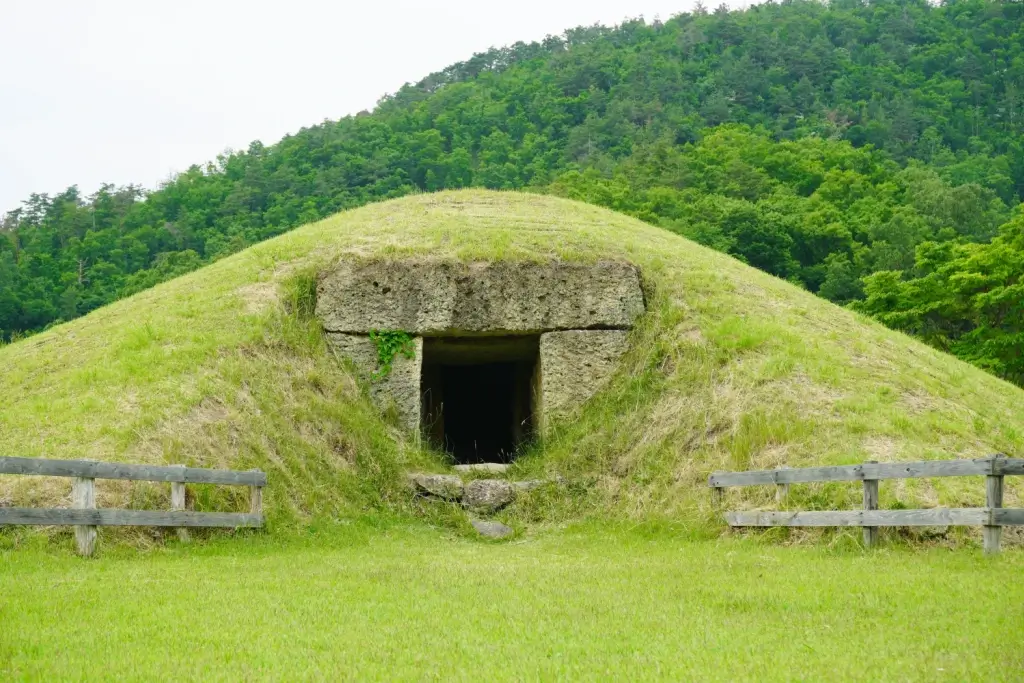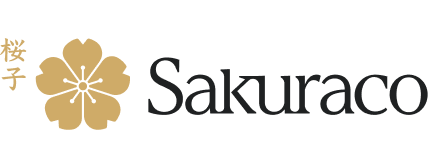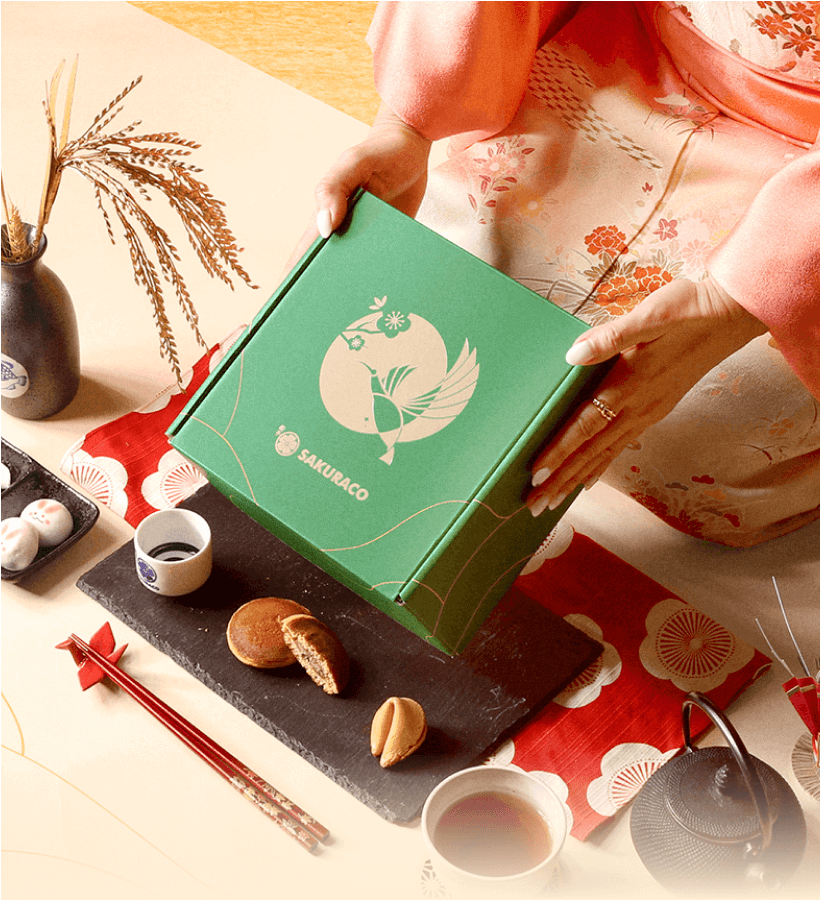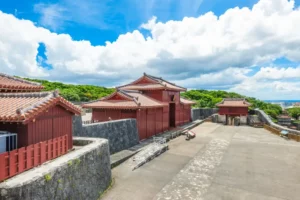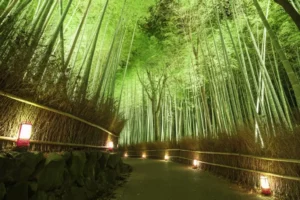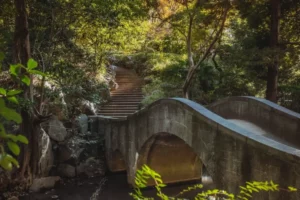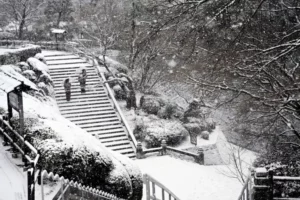Japan’s ancient kofun (burial mounds) often appear as simple parks, blending seamlessly into the surrounding city. But, in ancient times, they stood proudly above the landscape as symbols of their occupants’ wealth. These large, man-made structures contain the remains of powerful rulers. They headed their clans as they competed for power and resources, before being buried with the many treasures they had gained through trade with distant lands.
Today, the contents of these monumental tombs hold a different value: they contain precious clues about Japan’s early years and how a nation’s early identity was forged. Kofun are vital links to the past, inviting exploration even as they preserve history. Today, we’ll delve into Japan’s history and explore the origins of these enigmatic structures.
Table of Contents
ToggleWhat are kofun tombs?
The word “kofun” can be translated as “old mound” in English. The term is used to refer to special structures built during Japan’s Kofun period (250-538 CE) to house the remains of elite figures. To create them, ancient builders piled stones and packed earth until they rose above the surrounding countryside. Due to the hard work involved, they are typically situated on flat land that is easily accessible.
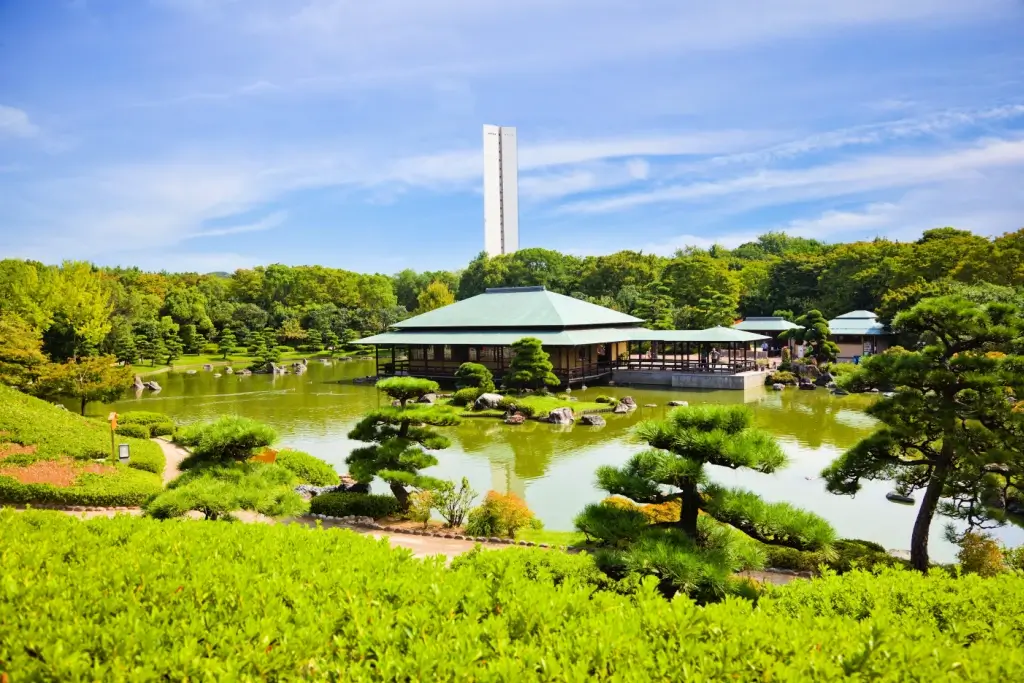
Kofun range from only a few meters tall to sprawling complexes covering several city blocks. They can also have several different shapes. Round and square types are common, but the keyhole design is the most iconic. When built with this special shape, the circular portion housing the actual remains is oriented to point east. The rectangular area is believed to have been used for ritual ceremonies.
The Kofun Period’s Historical Significance
During Japan’s Yayoi period (300 BCE – 300 CE), Japan was made up of numerous small clans. New agricultural techniques during this period led to increased trade between them. Over time, some became more successful than others. More powerful clans, particularly the Yamato in modern Nara and Osaka, combined forces and began trading with China and Korea overseas. This marked the beginning of a unified Japan and the first steps toward the country’s imperial form of government. These influential leaders wanted extravagant tombs to symbolize their authority, even in death.
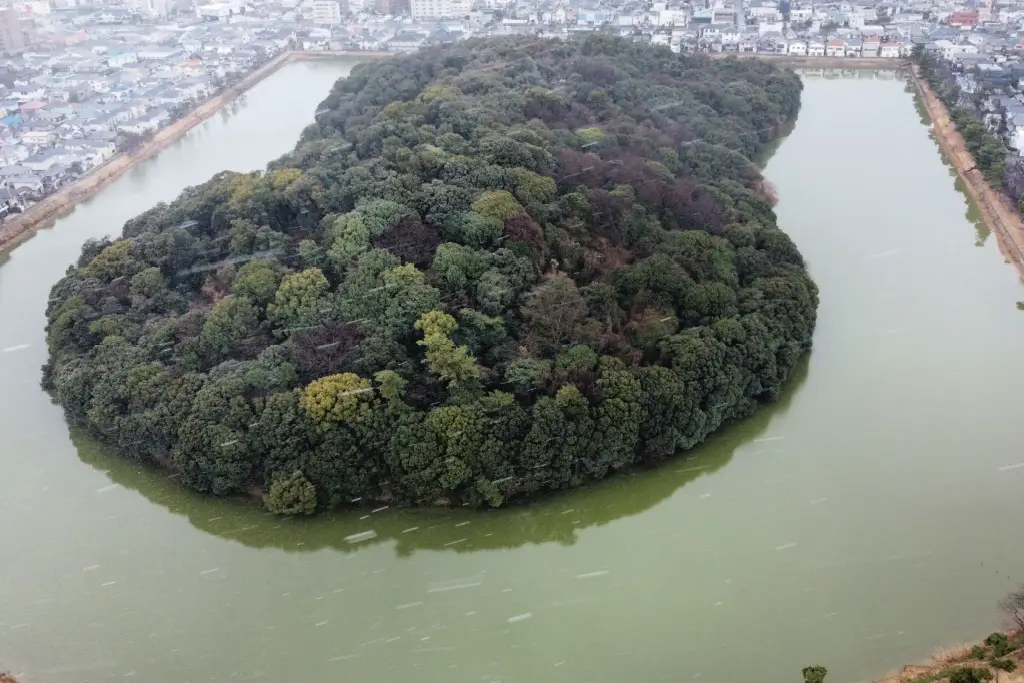
The initial purpose of these special tombs was to display wealth. They were filled with treasures such as bronze mirrors, iron swords, and jade beads. But, over time, the kofun also began serving the purpose of protecting the deceased in the afterlife. Statues of warriors called haniwa were also added to the treasure as guardians. Over 160,000 of these special hills can be found on plains all across Japan. However, the flat terrain surrounding Sakai was best suited to these massive construction projects. To this day, Sakai City has the most impressive examples. They are known as the “Mozu Kofun Cluster”.
Are you looking for amazing snacks from places like Osaka? Check out Sakuraco! Sakuraco delivers traditional Japanese snacks, teas, and sweets from local Japanese makers directly to your door every month, allowing you to experience the taste and tradition of Japan in your own home.
The Mozu Kofun Tombs
This UNESCO World Heritage Site comprises 49 mounds and approximately 100 tombs located in Daisen Park, Sakai City, Osaka Prefecture. Most are keyhole-shaped, but there are also smaller, round, and square versions spread throughout the park. Haniwa figures, depicting warriors and horses, are in the mounds, which are surrounded by moats. The moats are now empty, but they once held water for rituals. The entire site is a tribute to the Yamato clan’s dominance during the era.
The Mozu Kofun cluster also contains the grave of Emperor Nintoku, the 16th Emperor of Japan. It is the country’s largest keyhole tomb, measuring 486 meters in length and 35 meters in height. Its grounds are also the largest of any burial site in the world.
What’s inside Sakai City’s kofun?
Access to the interior tomb areas is restricted, but modern technology allows archeologists to investigate its hidden chambers without digging—some of the stone coffins within weigh several tons. Besides haniwa statues, other artifacts include bronze bells (dotaku), iron swords, and imported glass beads. Some of these artifacts can be viewed in the nearby museum.
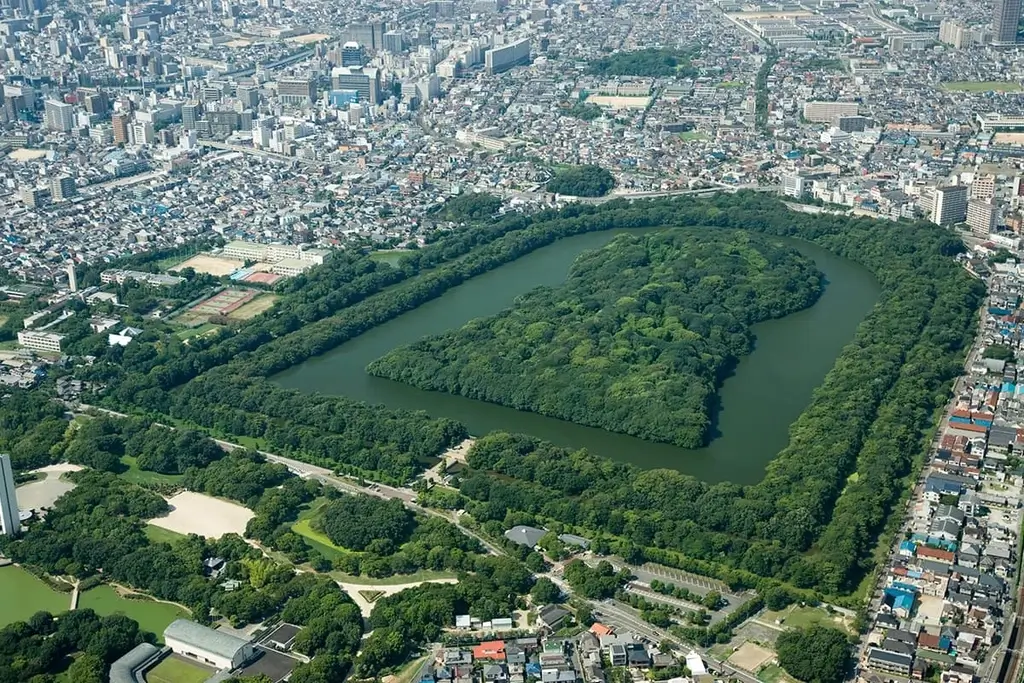
Visiting Sakai’s Kofun Tombs
Sakai City is a 20-minute train ride from downtown Osaka, making it ideal for day trips. Visitors can take the JR Hanwa Line from Namba Station to Mozu or Mikunigaoka stations. Once there, buses to the park cost 200 yen. On foot, it takes approximately 20 minutes to reach either station. The park’s flat walking paths are ideal for leisurely walks, although some paths may close during heavy rain. In spring and fall, cherry blossoms and autumn leaves enhance the scenery.
Stalls also sell matcha tea and traditional snacks, such as senbei, which can be enjoyed at the many picnic areas in the park. The Sakai City Museum is also located on the grounds. Entry to the park is free, but admission to the museum costs 200 yen. Visitors can view artifact displays or book group tours through Sakai’s tourism office. English maps are also available, and it’s possible to rent a bicycle to explore the area.
Why are Sakai’s kofun tombs important?
Sakai’s kofun tombs are significant because they offer physical evidence of a pivotal period in Japan’s history. Events during this era laid the foundation for Japan’s present imperial system and marked a shift toward centralized power. Their contents help historians understand ancient Japan and how early rulers projected power. They also provide insights into the economy and culture of Japan during this era, as well as its connections with the rest of Asia.

Overall, kofun construction came to an end with Buddhism’s arrival in the following Asuka period (538-710 CE). But these burial sites will always have a place in the creation of modern-day Japan. What do you think is the most interesting spot to visit in Daisen Park? Is there a specific area that you consider a must-see? Or an activity that everyone should experience? Share your thoughts or experiences below!
Cited Sources
- Japan Guide. “Mozu Tombs“.
- Nara Prefecture Historical & Cultural Resource Database. “Kofun Burial Mounds and Imperial Tombs“.
- Sakai City. “Features of Mozu Kofungun“.


